In modern society, due to high working hours, low wages and many other factors, many people have already planned to live a single or childless life for the rest of their lives. In addition, the recent epidemic of isolation and blockade has reduced the opportunities for human interaction.
Therefore, “keeping a dog” has become a good choice for people to relieve loneliness and keep each other company.
However, there are many different breeds of dogs, which one is more suitable for your living environment and pace?
The following is a detailed introduction of the characteristics and habits of 21 dog breeds for those who have difficulty in choosing, to help you find your good companion!
Miniature dogs (under 4kg)
1. Chihuahua

Country of origin: Mexico
Height: 15 ~ 23 centimeters
Weight: 1 ~ 4 kilograms
Average life span: 15 ~ 18 years old
1. Appearance
They are small in size, with a full round head, large round eyes and erect ears.
There are two types of coat: long hair and short hair. Most of the coat colors are a mix of cream, red, brown, black, and white.
2. Personality
“Cowardly in nature but very sensitive and alert.
It is a bit “nervous” and will bark at strangers or any movement. It is also a bit “self-centered” and needs some proper socialization and training.
Therefore, it is not recommended to keep it in densely populated areas such as apartment buildings in the city.
However, due to its small size and strength, it is very suitable for accompanying the elderly and is not dangerous to keep on a leash.
3. Living needs
Due to their “small size”, Chihuahuas can live in “apartments” or “small suites”.
However, Chihuahuas still need to exercise and play outdoors, but they are prone to injuries when playing with larger breeds, so special attention should be paid to their safety.
Chihuahuas are naturally afraid of the cold and need to be kept warm in winter.
In addition, the Chihuahua’s coat needs to be groomed regularly, especially for long-haired Chihuahuas.
4. Problems
Gum Disease: Because of their small mouths, Chihuahuas have teeth that tend to accumulate tartar and tartar, which can lead to dental disease. “Regular brushing” and ‘oral care’ are important to maintain oral health.
Difficulty in breathing: Chihuahuas have a “flat face” which can lead to difficulty in breathing, especially in hot weather or during strenuous exercise. Pay special attention to their “body temperature” and “breathing”.
Fragile body structure: There is a risk of “dislocated knees” and “easily fractured limbs”. Special attention should be paid to safety when playing.
2. Pomeranian
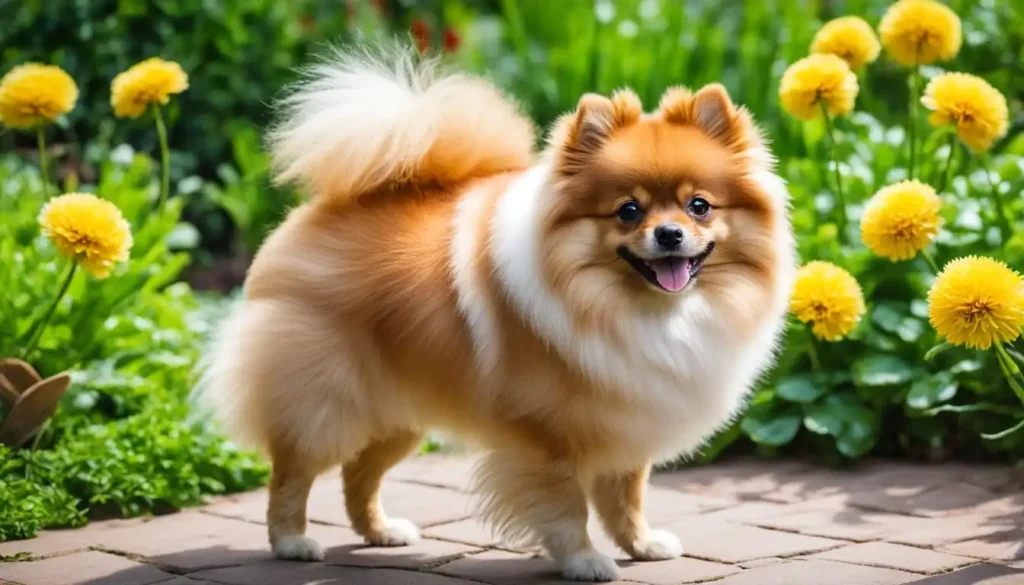
Country of origin: Germany (Pomerania)
Height: 18 ~ 30 centimeters
Weight: 1 ~ 3 kilograms
Average life span:12~16 years old
1. Appearance
The most conspicuous feature of the Pomeranian is its “fluffy, shiny coat”, which, together with its erect “small ears” and its tail that is often “stuck to its back”, makes it look like a small ball of hair that can walk when it walks.
Typical Pomeranian coat colors are “orange” or “red”, often with “white facial markings”.
2. Personality
The Pomeranian is very “active” and is considered to be one of the most “intelligent and trainable” of the small dog breeds, with an “excellent ability to learn”.
The Pomeranian is full of curiosity about all things and is very friendly and harmless to people.
3. Life Needs
Because they have a thick “double-layered coat” (the outer layer is rough guard hair and the inner layer is soft fleece), they need to be combed and groomed frequently, and they need to take in more “DHA”, “good protein” and other nutrients beneficial to the growth of the coat.
Pomeranian needs more “attention” and “companionship”, if the owner leaves it for too long, it will be prone to “separation anxiety”.
In addition, Pomeranian does not exercise much, so appropriate and gentle exercise can be given to Pomeranian.
4. Problems
Hair and skin care: Due to its dense fur, the Pomeranian needs regular combing and grooming to prevent tangles and hair loss. Cleanliness is also important to avoid skin diseases.
Prone to tracheal collapse: Small dogs are more prone to respiratory problems due to their shorter trachea. Severe tracheal stenosis can lead to “heart disease” and “hydrocele”.
Dislocated joints: Avoid overly strenuous exercise.
3. Yorkshire Terrier
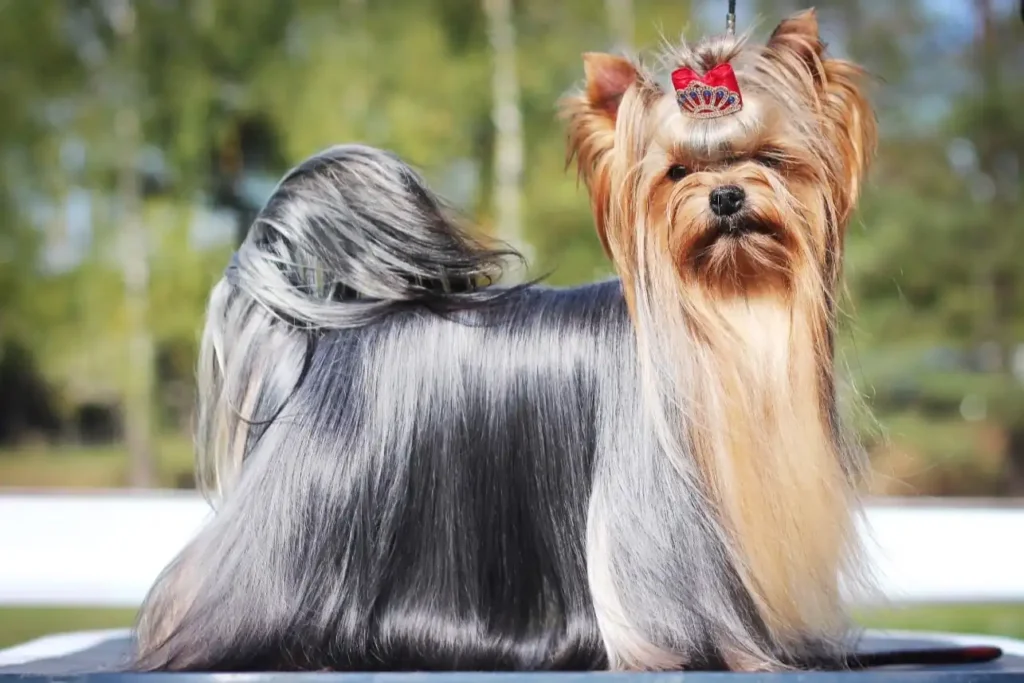
Place of origin: England (Yorkshire)
Height: 22 to 24 centimeters
Weight: 2 to 3 kilograms
Average life span: 12-15 years old
1. Appearance
The Yorkshire Terrier has a “silky long straight coat”, which is usually a combination of “steel blue” (silver blue) and “brown” (fire red).
This special coat color and small body size make the Yorkshire Terrier exude a different and elegant temperament.
2. Personality
Despite its small size, it is exceptionally “brave and loyal”.
It is a good watchdog as it is highly dominant and alert in the field.
It is a good watchdog, but it is a bit “stubborn” and has a low level of obedience.
3. Living Requirements
Requires more effort in grooming and “regular visits to the groomer” to maintain its appearance.
Yorkie does not do much exercise, but it is still necessary to walk it every day, and if it rains, you can also play and interact with it indoors to maintain its physical and mental health.
4. Problems
Retinal dysplasia: a common “genetic disease” that may lead to blurred vision, night vision loss, blinking eyes and even blindness.
Prone to skin infections: Due to “high sebum secretion” and dense hair, Yorkies are susceptible to skin diseases if they are not properly cared for.
Inverted eyelashes: Yorkies may have eyelashes that grow inward, irritating or scratching the eyeball. This can be solved by “eyelash trimming, removal or surgery”.
4. Maltese
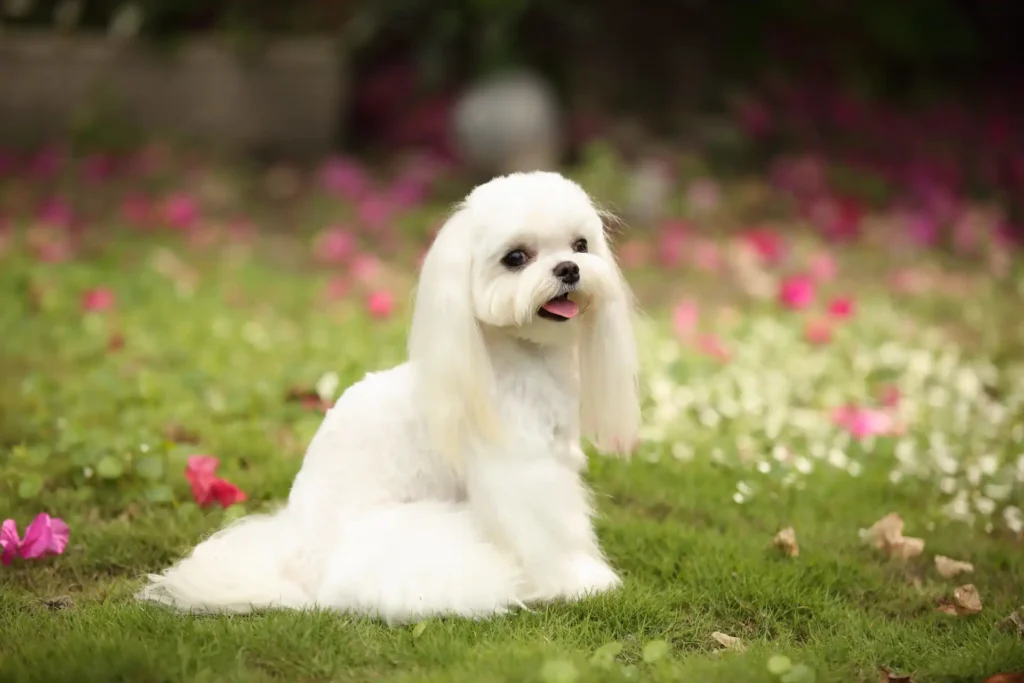
Origin: Malta (Malta Island)
Height: 20 ~ 25 centimeters
Weight: 1 ~ 3 kilograms
Average Life Span: 12 ~ 15 years old
1. Appearance
Long and thick hair, usually white, some with light brown or light yellow spots.
They have a cute face with large round black eyes and long ears.
2. Personality
The Maltese has a very “docile” personality and is “not afraid” of strangers, making it a very friendly and affectionate breed.
It is a very friendly and affectionate breed that is ideal for family life and urban environments.
3. Living Requirements
The Maltese is not a big eater, but it is easy to be picky about what it eats.
When choosing feeds, you should select “small pellets” and “good palatability” to suit its small mouth.
At the same time, it is also important to avoid over-pampering, which can lead to picky eating habits, or feeding overly flavored and stimulating foods.
Since it has a long and dense coat, regular maintenance, cleaning and trimming are very important.
4. Problems
Genetic eye diseases: Genetic cataracts and corneal ulcers caused by genetic defects.
Heart problems: Some Maltese may have “heart valve disease”.
Bone problems: Maltese often have “hip dysplasia”, which can cause joint pain and interfere with normal movement.
Immune system disorders: Autoimmune hemolytic anemia (IMHA) is also a common disease in Maltese. Owners should pay attention to their dogs if they notice symptoms such as weakness, poor appetite, unusual fever, pale or red mucous membranes, and change in urine color.
Small Dog ( 5 ~ 10kg )
5. Dachshund
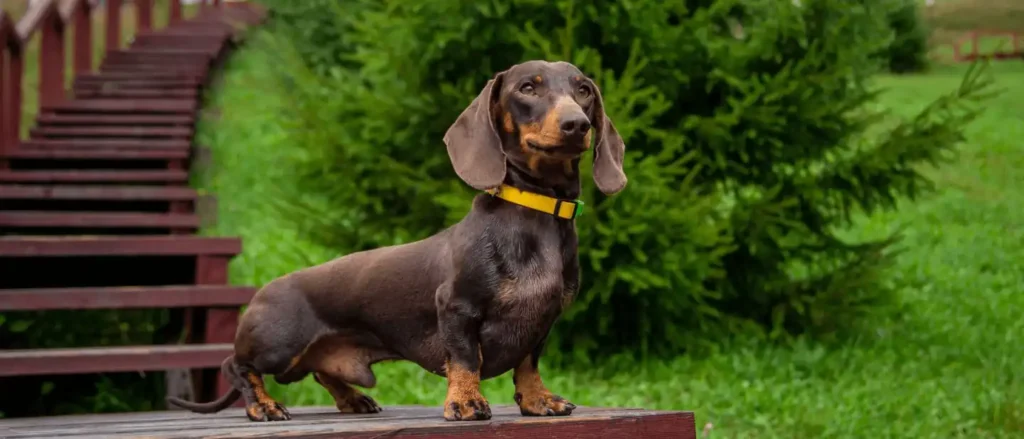
Country of origin: Germany
Height: varies according to breeds (Miniature and Standard), roughly 13~24cm
Weight: 4~10kg
Average life span: 12~15 years old
1. Appearance
There are many different sub-breeds of Dachshunds, which can be categorized into “Miniature” and “Standard” according to their body type.
Dachshunds can be categorized into “Short-haired Dachshund”, “Long-haired Dachshund”, and “Coated Dachshund” according to their coat type.
The Dachshund has a long, narrow body and four short legs, with large, bright eyes and soft, drooping ears. Its innocent, cute expression makes it very popular.
2. Personality
Although the Dachshund is short and has very short limbs, it has the genes of a hunting dog.
The Dachshund is not only physically strong and has a keen sense of smell, but is also very intelligent and trainable.
It is very “gentle” and “loyal” to its owner and sometimes a little “naughty”.
3. Living Requirements
Don’t underestimate its need for exercise just because of its size, it still needs enough exercise to consume its physical strength, and to avoid being locked up indoors for a long period of time, which will cause it to be in a bad mood and anxious, and may damage the furniture.
4. Problems
Eye problems: Cataracts are common in old age.
Skeletal problems: Bone spurs and disc disease are common in long bodies.
6. Miniature Poodle
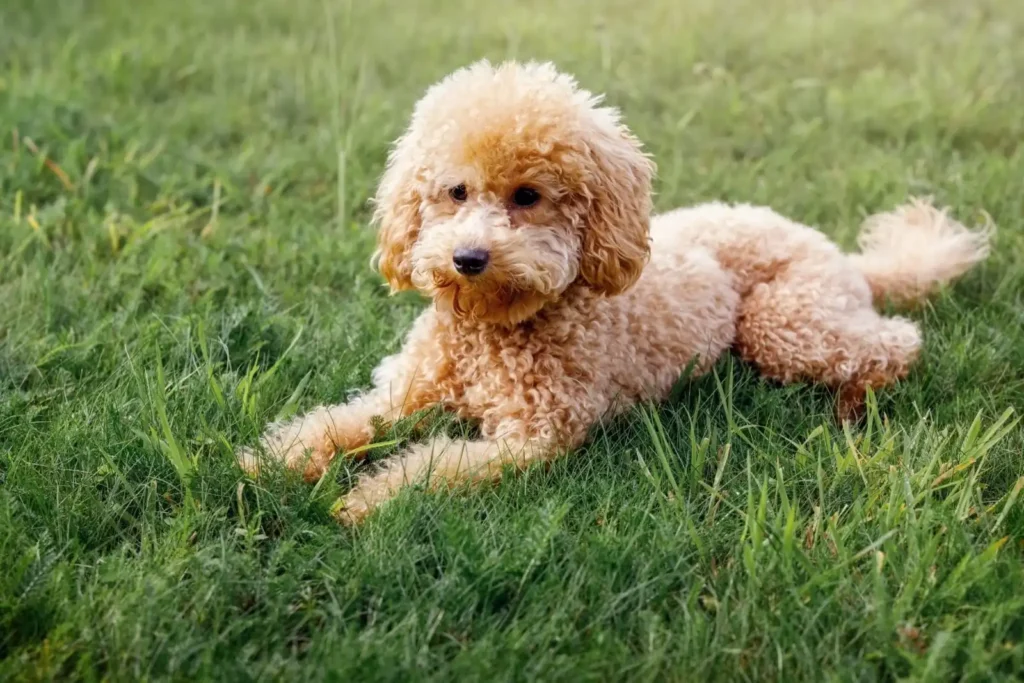
Country of origin: Germany, France
Height: 25 ~ 28 centimeters
Weight: 6 ~ 10 kilograms
Average life span:12 ~ 14 years old
1. Appearance
Wavy hair, common colors are white, black, apricot and grey.
2. Personality
Very “lively and friendly”, very “warm” to strangers. It has an “extremely high IQ” (second only to the Border Collie), and because it is very intelligent and sensitive to human emotions, it needs more attention and companionship from its owner.
3. Living Needs
Because of its high IQ, the Border Collie needs more companionship and interaction.
It is not recommended for people who are busy at work or who often go out of their home.
Its hair is “wavy” and “easily knotted” when it is curled, so it needs to be combed frequently.
4. Problems
Skin problems: Skin is sensitive and fragile, easy to be infected with “odor dermatitis”. Due to the structure of the drooping ears, the area covered by the ears for a long time is prone to odors due to the accumulation of earwax and stuffiness, and may even be infected and inflamed.
Knee Problems: Poodles have a high incidence of “knee joint dislocation” and “posterior cruciate ligament dislocation”.
Eye Problems: Poodles have a high incidence of “retinal breaks” and “blindness”, which is a “genetic defect”.
7. French Bulldog
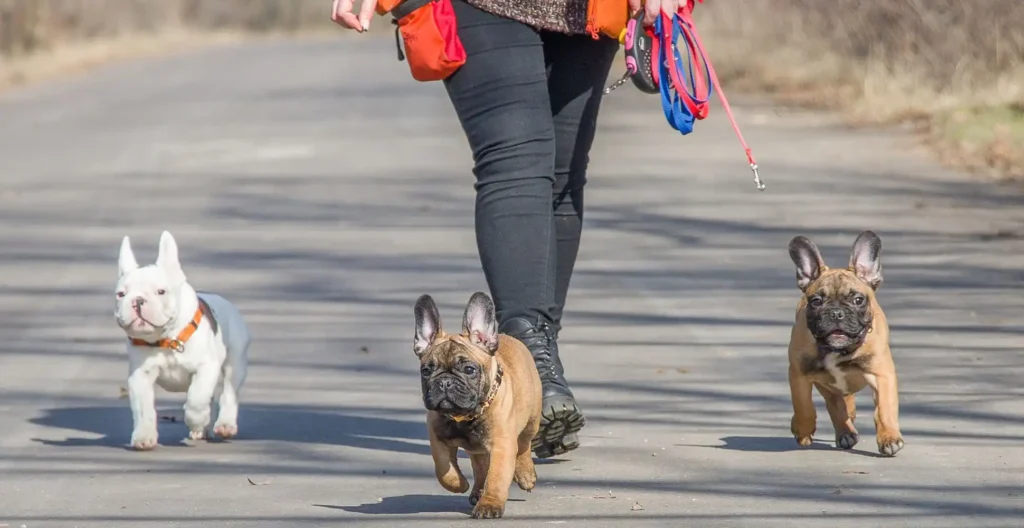
Place of origin: France
Height: 24 ~ 34 centimeters
Weight: 8 ~ 10 kilograms
Average life span:10~12 years old
1. Physical Characteristics
Short but thick body, short and huge head, protruding chin, strong but short limbs, large and protruding eyes.
Hair is short and smooth, mostly cream, tiger, and camel.
Its wrinkled, boredom-ridden face has won it the favor of many people.
2. Personality
Extremely “clingy” to its owner. It is not recommended to leave it alone often as it is prone to “separation anxiety”.
Tame and friendly, it is a very “socialized” breed and likes to interact with people and other pets.
3. Life Needs
“Not much exercise”, walks and relaxing games can satisfy their exercise needs.
They need to pay more attention to temperature changes, and are not accustomed to high temperatures and humid weather, and “overheat easily”.
In hot weather, provide sufficient water and avoid excessive activities.
4. Problems
Hip dysplasia: Hip degeneration and wear and tear may occur due to congenital dysplasia, as well as later in life due to poor diet, excessive exercise, and poor posture.
Respiratory problems: Due to the shape of its head, the French Bulldog has a physiological defect called “narrow nose”. The fragile respiratory system prevents the French Bulldog from effectively regulating its body temperature, making it prone to respiratory distress and heat stroke in the summer months.
Eye Disease: May suffer from “third eyelid glandular detachment” (cherry eye), which can be cured by “surgical repositioning”.
8. Bichon Frise

Place of origin: Spain
Height:23~30 centimeters
Weight: 3-6 kilograms
Average life span:12~15 years old
1. Appearance
Petite, with fluffy and double-layered hair (the outer layer of hair is upright, while the inner layer is shorter and fluffy), and most of the hair color is “white”.
The fluffy fur all over its body makes it look like a marshmallow.
2. Personality
It is not very barking and is very adaptable.
Therefore, it is suitable to be kept in urban areas and apartment suites.
3. Living Requirements
Hair needs to be combed frequently (at least 1-2 times a day) to keep it smooth and free of tangles.
It is not resistant to high temperatures. In summer, it is necessary to control the temperature and hydrate it indoors or outdoors to help it dissipate heat and avoid heat stroke.
4. Problems
Prone to skin disease: Bichon Frise has thick and fluffy hair and sensitive skin, so if you don’t pay attention to environmental cleanliness and the hot and humid weather in summer, it is easy for Bichon Frise to contract skin disease.
Gastrointestinal problems: Bichon Frise’s intestines and stomach are very fragile, and eating food that is too greasy or too stimulating is likely to cause gastrointestinal discomfort, so it is important to pay attention to your Bichon Frise’s diet, and try to focus on “high nutrient value” and “light” foods, or else it will be easy to cause gastroenteritis.
Dacryoadenitis: Bichon Frise has developed tear glands, so if the face is not properly cleaned, or the hair around the eyes is too long and often rubs against the eyes, it will be “easily infected and inflamed”.
9. Shih Tzu
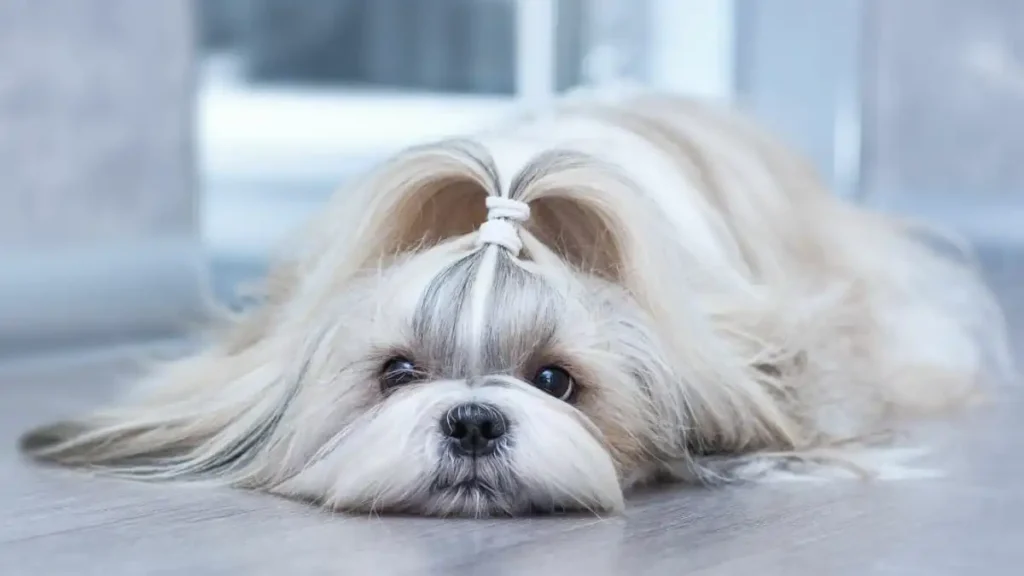
Place of origin: China
Height: 23-28 centimeters
Weight: 4-7 kilograms
Average life span: 10-16 years old
1. Appearance
The hair is dense and not curly, but it looks big and crowded because of the thick hair.
The coat color is rich and varied, with “white” and “cream” being the most popular colors.
Small size, short limbs, and upturned tail.
2. Personality
The Shih Tzu has a friendly, gentle personality and is very independent.
The Shih Tzu is very “independent” and not overly dependent on its owner for companionship, making it a good family pet dog.
3. Life Needs
The Shih Tzu is very active. To keep it healthy, it is best to take it outdoors on a regular basis, and if it is too busy to take it out, it should be allowed to stay in a spacious indoor environment to make it easier for it to move around and play.
Since Shih Tzu can catch cold easily, it is not necessary to bathe it too often.
Depending on the season and temperature, you may choose to bathe your Shih Tzu once a week to once a month.
4. Problems
Eye problems: Due to its special facial structure, its “shallow eye sockets” are easily touched when the hair around its eyes is too long, which can lead to “conjunctivitis” if not properly cleaned and sanitized.
Respiratory problems: Due to its “flat facial structure”, it has the same respiratory problems as the short-nosed breeds (Bulldogs, Falcons), resulting in problems such as “shortness of breath” and “snoring”.
Skin Problems: With a dense, long, straight coat, the dog needs to be groomed and cared for on a daily basis, as well as being subjected to various skin disorders that can be caused by smothering of the coat. Many owners respond by “cutting the coat short” all year round, which eliminates grooming and maintenance and prevents skin infections.
10.Miniature Schnauzer
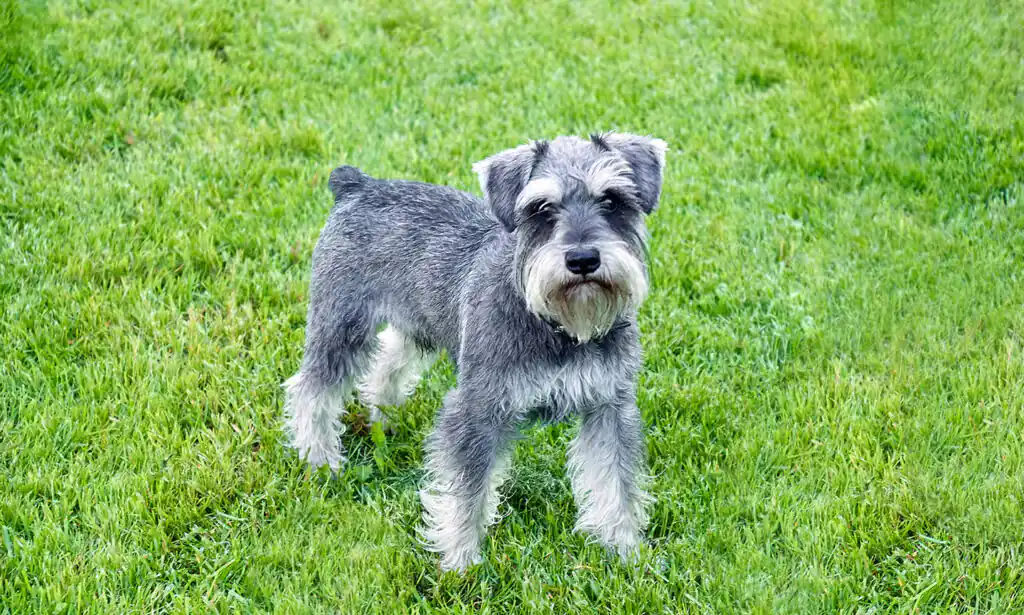
Country of origin:Germany
Height:30 ~ 36 centimeters
Weight: 5 ~ 9kg
Average life span:12 ~ 15 years
1. Appearance
The most striking feature of the Schnauzer is the thick bearded hair on the face and the feathery eyebrows.
The Schnauzer’s body is small and the hair is thick and hard. Common coat colors are white, black, silver and salt-and-pepper.
2. Personality
The Schnauzer is “smart” and well-trained, and is extremely “loyal” to its owner. It likes to interact and play with its family members.
Although it has a friendly nature, it still has the qualities of a “guard dog”.
It can serve as a good guard for the family and be alert to potential threats.
3. Lifestyle Requirements
The Schnauzer needs to be given “enough exercise”, being indoors for a long period of time will make it irritable and anxious.
The Schnauzer is “more fragile” than other breeds, so it requires more attention.
For example, the frequency of bathing, balanced nutritional intake, bone and dental care, etc., all require the owner to pay more attention.
4. Problems
Hair and skin problems: According to the humid climate of Taiwan, it is better to bathe once every seven to ten days, and the most important thing is to keep its body dry to avoid skin diseases and colds. Hair should be trimmed at least once every two months.
Bone Problems: Bones are fragile. Avoid strenuous exercise to avoid fracture, and consume more calcium-rich food.
Diseases caused by diet: Avoid feeding bones, high-fat, high-nutrient foods that contain too much seasoning and processing; “light” and “nutritious” are the best choices. In this way, problems such as pancreatitis and gall and kidney stones can be avoided.
Tartar: Periodontal disease and tartar are common, so brushing your teeth should not be neglected.
11. Japanese Spitz
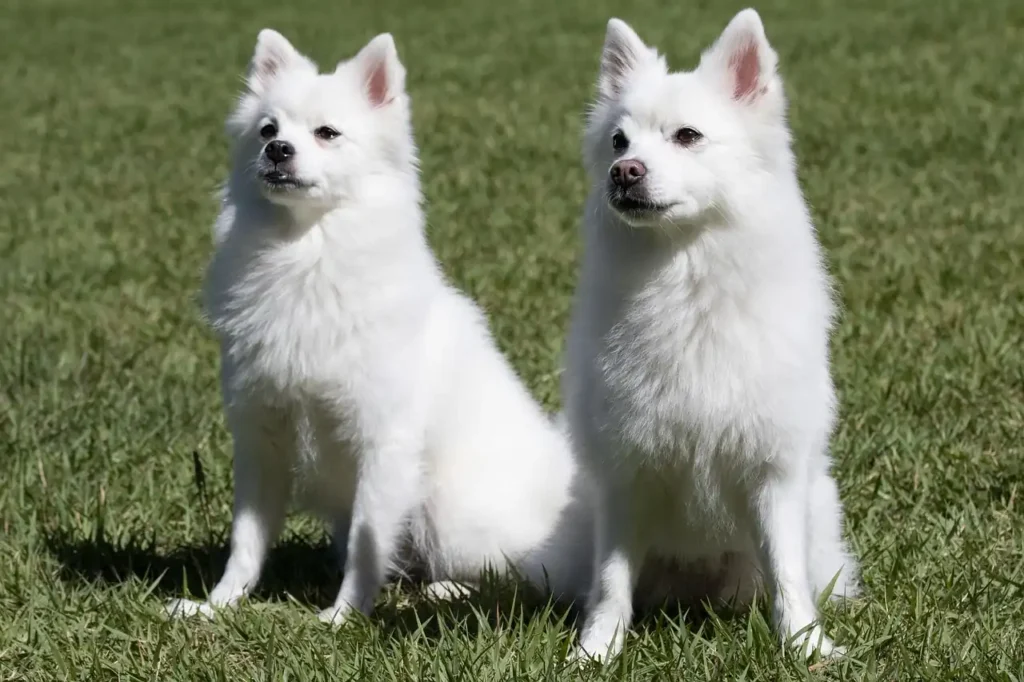
Place of origin: Japan
Height: 30 ~ 36 centimeters
Weight: 6 ~ 10 kilograms
Average life span:12 ~ 15 years old
1. Appearance
Sharp face, delicate appearance, and ears make it look like a fox.
Hair length is medium and fluffy, with a smooth and soft texture. The coat color is mostly black, white and reddish brown.
2. Personality
Sensitive and alert, not very friendly to strangers.
It is very suitable to be trained as a guard dog.
“It is very energetic and loves freedom. It likes to stay in outdoor environment.
3. Living Requirements
Good physical strength, needs a lot of exercise and play to expend energy.
Prefers an outdoor environment and should not be kept indoors for long periods of time.
The fluffy hair needs to be cleaned and trimmed regularly.
4. Problems
The Japanese Spitz is a healthy dog with very few illnesses. Maintaining a good routine, a balanced diet and enough companionship, as well as regular cleaning and trimming of its coat, will keep it physically and mentally healthy.
12.Pug
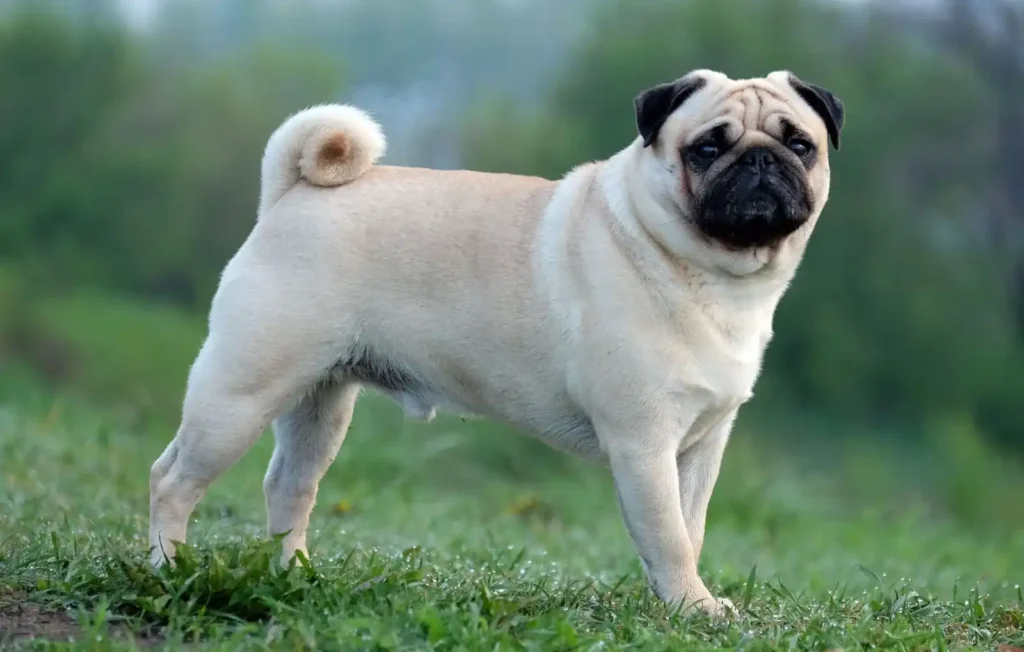
Country of Origin: China
Height: 25 ~28 cm
Weight: 5 ~ 10 kg
Average life span: 12 ~ 15 years
1. Appearance
He is short in stature and has a “big, flat, round face” that is “full of wrinkles” and looks “aggrieved and melancholy.”
The ears are “folded”. The “tail curls” over the back. The hair is short and smooth. The fur colors are mostly “tawny”, “black”, etc.
2. Personality
Don’t be fooled by its melancholy and pitiful appearance. It is actually “optimistic and cheerful” and has a “gentle and stable personality”.
Very demanding on “cleanliness” and cleanliness of the environment and oneself.
3. Living Requirements
Because pugs are “lively and playful”, they must be given a certain amount of time every day to let them get in touch with the outdoor environment.
A simple walk is all you need, no strenuous exercise is required to consume your energy.
Pugs are more resistant to hot climates. In summer, you should try to keep them in a “cool environment” and keep them well hydrated to avoid heat stroke.
4. Problem-prone
Because the pug was artificially bred, it has the special facial appearance it has now. The price behind this is suffering from “various respiratory problems.”
The peculiar appearance of the pug is caused by a natural defect in his respiratory tract (short-nosed respiratory syndrome).
This defect will cause it to have side effects such as: “difficulty and rapid breathing”, “poor physical strength or endurance”, “prone to heat stroke” and other side effects.
Therefore, it is extremely important for pugs to avoid excessive strenuous exercise, keep the environment cool, and ensure hydration.
13. West Highland White Terrier
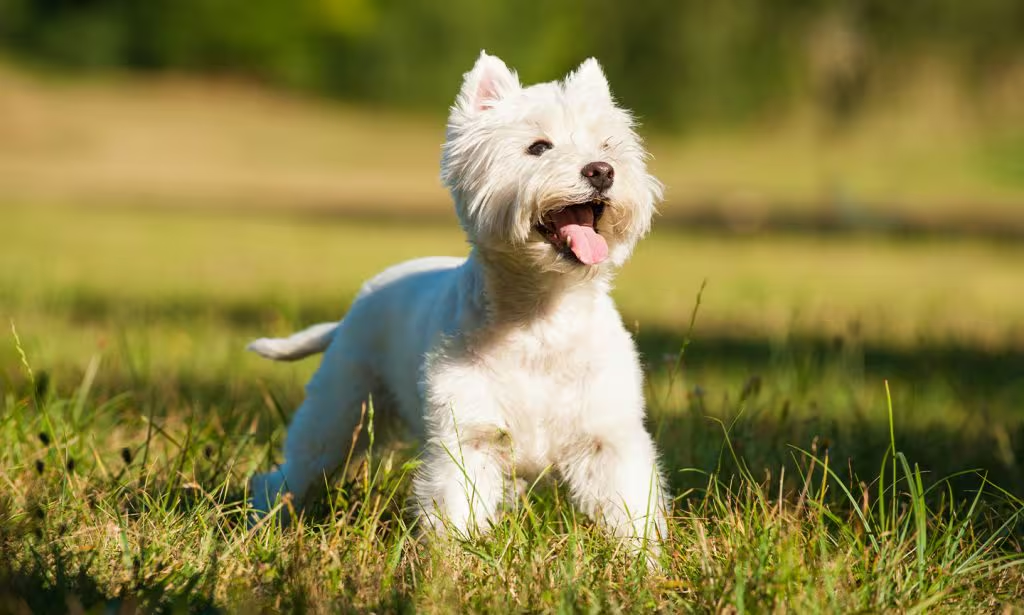
Place of origin: England (Scotland)
Height:26 ~ 28 centimeters
Weight: 7 ~ 9 kilograms
Average life span:12 ~ 15 years old
1. Appearance
White double coat, the outer layer is rough and hard, the inner layer is softer. “Its small black nose and bright black eyes make it look witty and lively.
2. Personality
“Vivacious, active and very self-motivated, therefore training will be a bit of a challenge and will require a bit of patience.
Because of its “hunting instinct” and strong sense of “territory”, it will be more aggressive towards strangers, and you need to pay attention to children’s safety when you have them at home.
3. Living Needs
Despite their small size, West Highland White Terriers are still very active dogs and need daily “exercise” and “stimulation” to maintain their physical and mental health.
Despite their independent nature, avoid leaving West Highland White Terriers alone for too long to prevent them from destroying things in the house.
Consider buying some toys for him to play with so that his attention can be diverted from other objects in the house.
4. Problems
Skin Problems: The West Highland White Terrier is a dog breed that is prone to skin diseases, and the rate of “odorant dermatitis” is particularly high.
Neurological problems: e.g. White Dog Wobbling Syndrome. Commonly found in small white dogs, it causes head tilt, limb weakness, ataxia and spasms. It may be caused by an autoimmune neurotransmitter deficiency.
Lung disease: e.g. “idiopathic pulmonary fibrosis”. The main symptom is “dyspnea”, which leads to impaired endurance and exercise capacity, accompanied by fever and frequent coughing.
Medium Dog (11 ~ 25kg)
14. Shiba Inu
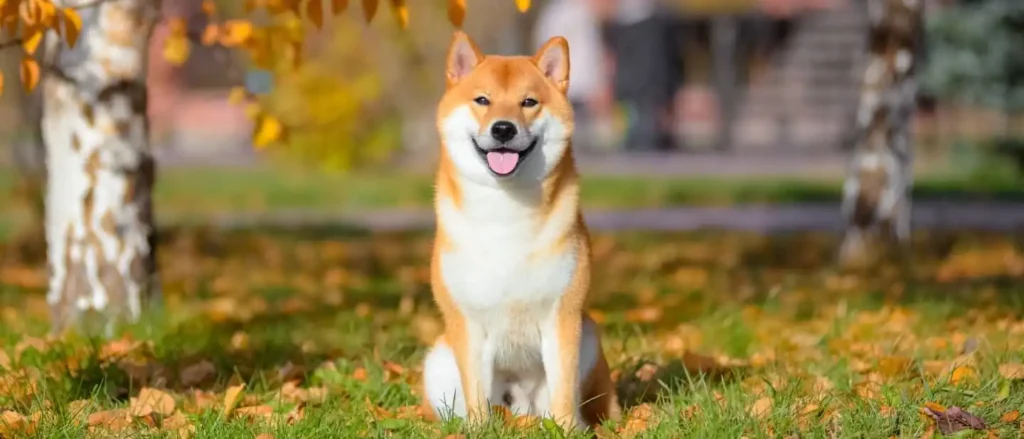
Country of origin: Japan
Height: 35 ~ 41 centimeters
Weight: 7 ~ 10 kilograms
Average Life Span: 12 ~ 15 years
1. Appearance
It has a triangular face, pointed ears, an upright tail, and deep eyes.
The tail is curled, either to the left or to the right.
It has short hair all over its body, and the common colors are light brown, black, white, or carmine.
2. Personality
The Shiba Inu is very independent and stubborn. The Shiba Inu is “alert” and has a certain degree of aggressiveness due to its previous use as a hunting dog.
3. Life Needs
The Shiba Inu has a “high demand for activity” and needs enough exercise to burn off its energy, otherwise it may destroy household items.
The Shiba Inu matures twice a year, with one molt lasting about half a year. “Hair loss is more serious during the moulting period”, so the Shiba Inu needs to be groomed and trimmed on a regular basis.
4. Problems
Eye problems: susceptible to diseases such as glaucoma, progressive retinal atrophy and cataracts.
Endocrine disorders: If you find your Shiba Inu has appetite changes, drastic weight loss or gain, hair loss, fatigue or indigestion, it is very likely to suffer from endocrine disorders (e.g. hypothyroidism, hyperadrenaline). Immediate hospitalization is recommended.
Dislocation of knee joints: According to the survey, about 7% of Shiba Inu will suffer from dislocation of knee joints due to heredity.
15. Welsh Corgi
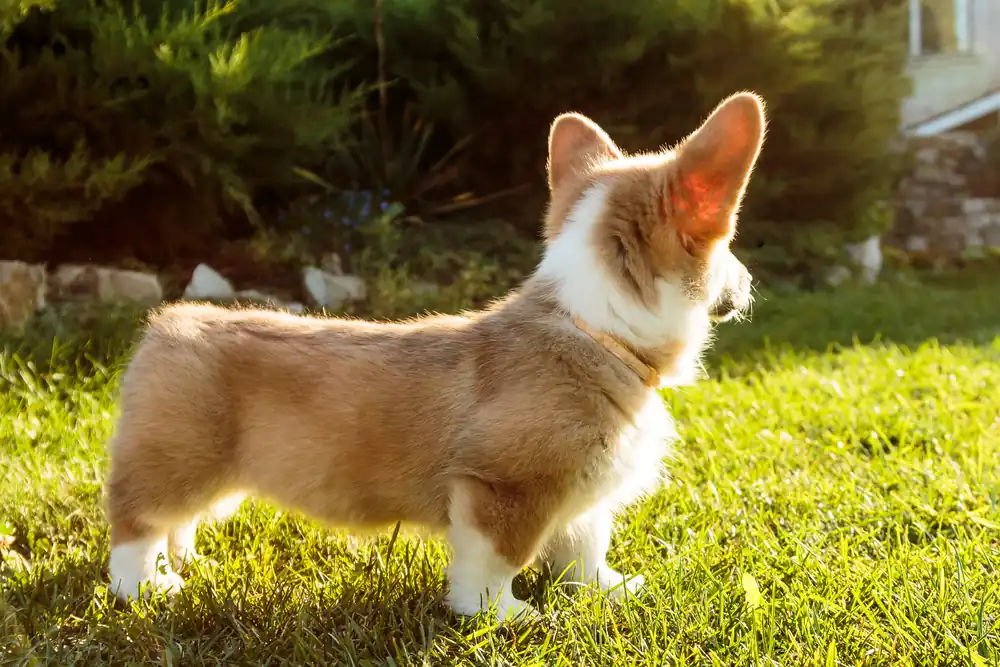
Place of Origin:UK ( Wales )
Height:25 ~ 30 centimeters
Weight: 11 ~ 14 kilograms
Average life span:12 ~ 15 years old
1. Physical Characteristics
The Corgi has a “short and stout body” with “short limbs”. It has a big head with “standing ears”.
Common coat colors are black, white and reddish brown.
Some Corgis may have their tails broken shortly after birth to meet the needs of their owners. There are three reasons for this:
In the past, when they were working as “sheepdogs”, a broken tail would make it easier for them to run.
A long tail is likely to cause “spinal stress” and may result in herniated discs.
Breaking the tail can expose its rounded buttocks, which is preferred by “human aesthetics”.
2. Personality
The Corgi is very “intelligent”, “loyal” and “friendly”.
They are usually affectionate towards their family members and love to participate in family activities.
Despite their small size, Corgis usually have “guardian instincts” and will be vigilant in protecting their family members.
3. Lifestyle Needs
The Corgi is intelligent and easy to train.
However, they can also have some “stubborn” and “independent” qualities, so early socialization and basic obedience training are very important.
The Corgi’s coat is of medium length and requires regular grooming to keep it neat and tidy. They usually have two moults and need special attention. 4.
4. Problems
Inadequate blood clotting: Some Corgis are born with “abnormal blood clotting”. They may have problems with bleeding when they are injured or undergo surgery.
Spinal problems: Due to their short and long body, Corgis tend to put pressure on their spine when jumping and running, resulting in “herniated discs”, which irritate the surrounding nerves and cause pain, making it difficult for them to move.
Large dog ( over 25kg )
16. Labrador Retriever
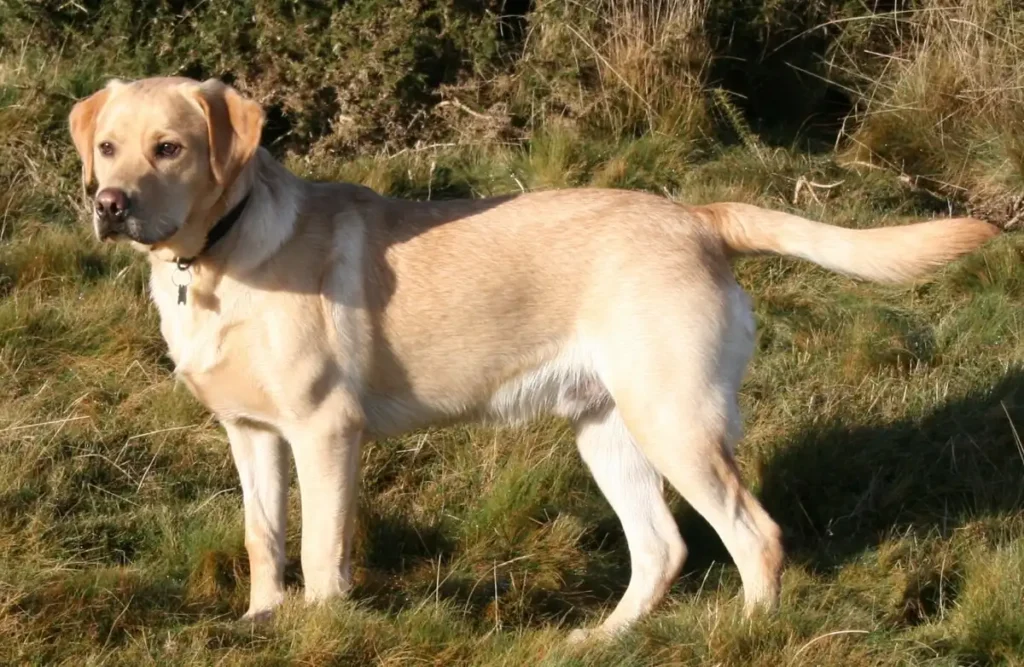
Place of origin: England
Height: 54 ~ 57 centimeters
Weight: 25 ~ 34 kilograms
Average life span: 10 ~ 12 years old
1. Appearance
The Labrador is a large short-haired dog, and the common coat colors are “black”, “yellow” and “beige”.
“It is a large and robust dog with large ears that are drooping in shape.
2. Personality
The Labrador is tame, friendly, intelligent and obedient.
It is a good choice for working dogs, and is often seen in roles such as psychiatric dogs, guide dogs, and search and rescue dogs.
3. Living Requirements
The Labrador is physically fit and has a high level of physical activity. It needs sufficient exercise every day to maintain its physical and mental health.
Due to its large size, it naturally eats a lot, but it should not be overly pampered and its diet should be limited to avoid over-obesity and other diseases.
4. Problems
Obesity problem: Labrador has a large amount of food, and its physique is easy to get fat, if the owner does not control its diet, it is easy to make it “overweight”, which will lead to other diseases such as “arthritis”, “heart disease” and “diabetes”.
Skeletal problems: For example, hip joints are already prone to injury and dislocation, and if the animal is overweight and under high intensity exercise, the pressure on the hip joints will be even greater. Degenerative arthritis is more likely to occur in old age.
Tumors: Labradors can also suffer from tumors, including skin tumors, lymphomas, and hemangiosarcomas. Regular checkups can help with early detection and treatment.
17. Golden Retriever
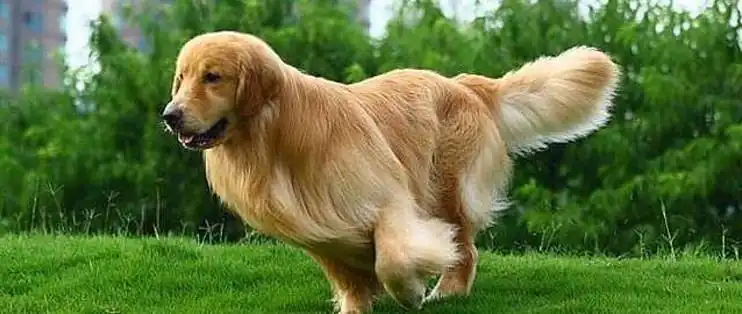
Origin: United Kingdom (Scotland)
Height: 54 ~ 61 cm
Weight: 25 ~ 34 kg
Average life span: 10 ~ 13 years
1. Appearance
It has long and dense outer hair with large “wavy” hair, and its hair color is mostly “light golden” to “dark golden”.
It is a “lop-eared dog” with a wide head and round and gentle eyes. It looks very kind and cute.
2. Personality
They are very “friendly” to people and other animals, “socially capable” and relatively “non-aggressive”.
Because of its hound ancestry, it is also very athletic.
3. Life needs
“Energy”, requiring a lot of exercise or play to consume their energy.
The hair is long and dense and requires attention to cleaning and maintenance.
4. Problem-prone
Skin problems: The hair is thick, and if it is not cleaned and maintained regularly, it is easy to contract “skin diseases”.
Hereditary heart disease: Golden retrievers have a genetic predisposition to heart disease. If the diet is not controlled and the dog is too obese, it will increase the risk of this disease.
Tumor problem: Golden retrievers are one of the dog breeds that are more likely to develop “tumors”, such as “lymphoma”, “angiosarcoma” or benign “lipoma”.
18. Siberian Husky
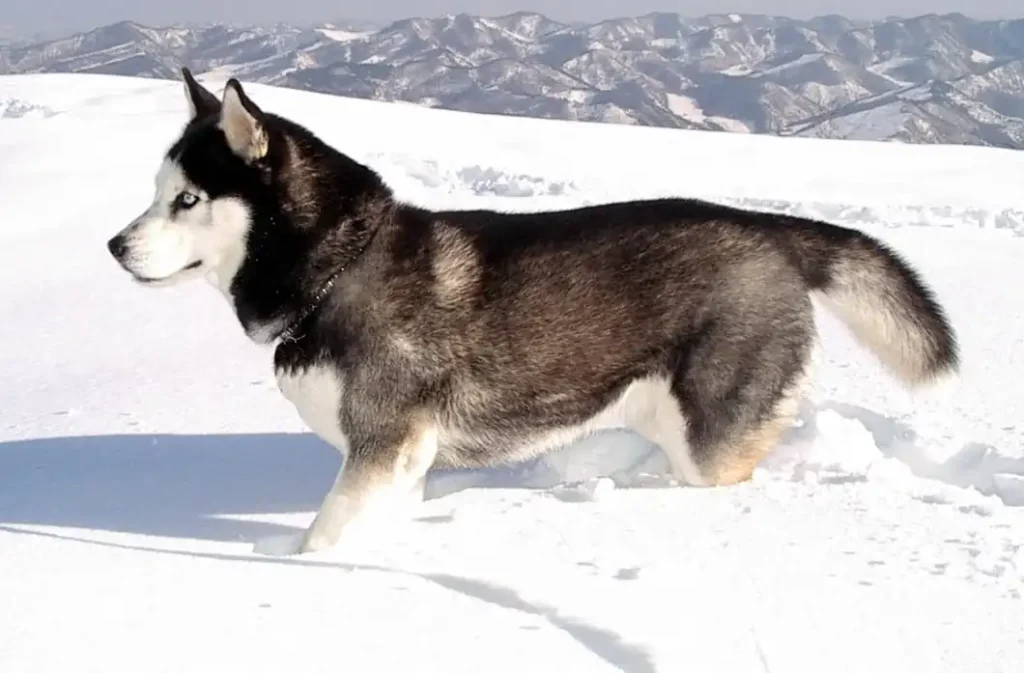
Country of origin: Russia (Siberia)
Height: 50 ~ 60 centimeters
Weight: 16 ~ 27 kilograms
Average life expectancy: 10 ~ 15 years old
1. Appearance
Husky head is wedge-shaped, with two stilted “standing ears”, the appearance “looks like a wolfhound.
Eyes are the most eye-catching feature of Huskies.
They are usually almond-shaped and can be blue, brown, green, or “one blue and one brown” (known as heterochromatic eyes).
They have a dense medium-length coat of black, grey, red, white and other common colors.
2. Personality
Although the Husky is very “smart”, but it is very “self-conscious”, always unique to do something incredible, so there is the so-called “Erha” title.
Its personality is very “gentle” and “friendly”, even with strangers.
So it is a good choice for a family pet dog.
However, if you expect it to play the role of a guard dog, you are mistaken.
3. Lifestyle Needs
As a sled dog, the Husky has “very good physical strength and athletic ability” and a lot of daily exercise and physical exertion is necessary.
If it lacks companionship and exercise, its high energy level coupled with “separation anxiety” will definitely cause it to chew on furniture and objects in the house.
If you are a busy person, you must evaluate your own suitability before keeping a Husky.
Huskies are a cold-blooded breed, so they are “very afraid of heat”.
In particular, the hot and stuffy weather in Taiwan during the summer will not only make it very uncomfortable, but may also lead to skin diseases.
You can help to reduce the heat by turning on the air conditioner and trimming the thick hair on the dog’s body.
4. Problems
Skin diseases: Thick hair and hot weather can easily cause skin diseases.
Eye problems: Huskies are prone to uveitis and cataracts.
19. Shar-Pei

Place of Origin: China
Height: 44 ~ 51 centimeters
Weight: 16 ~ 29 kilograms
Average Life Span: 9 ~ 11 years old
1. Appearance
One of the most distinctive features of the Shar-Pei is its “wrinkled skin”, which is especially noticeable when it is a puppy.
As they reach adulthood, the number of folds may decrease, but some wrinkles remain.
They have a strong build and short, stout limbs.
The short, flat nose and small “lotus ears” make this breed very distinctive.
2. Personality
“Loyal”, ‘Independent’, ‘Quiet’. It is very friendly to its owner and its family, but can be aggressive to strangers as it becomes defensive.
3. Life Needs
Proper Exercise: The Shar-Pei needs “proper exercise” such as walking, running and playing to keep its body and mind healthy.
Socialization: Early socialization is very important for Shar-Pei to help them cope better with strangers and other dogs.
4. Problems
Skin Problems: Because of their wrinkled skin, Shar Peis need regular skin care, including cleansing and moisturizing, to prevent “skin diseases”.
Shar Pei Fever Syndrome: Shar Pei Fever Syndrome is a “familial hereditary disease” that occurs only in the Shar Pei breed. Symptoms include fever, loss of appetite to anorexia, lethargy, weight loss, dehydration, and swollen joints.
20. Doberman Pinscher
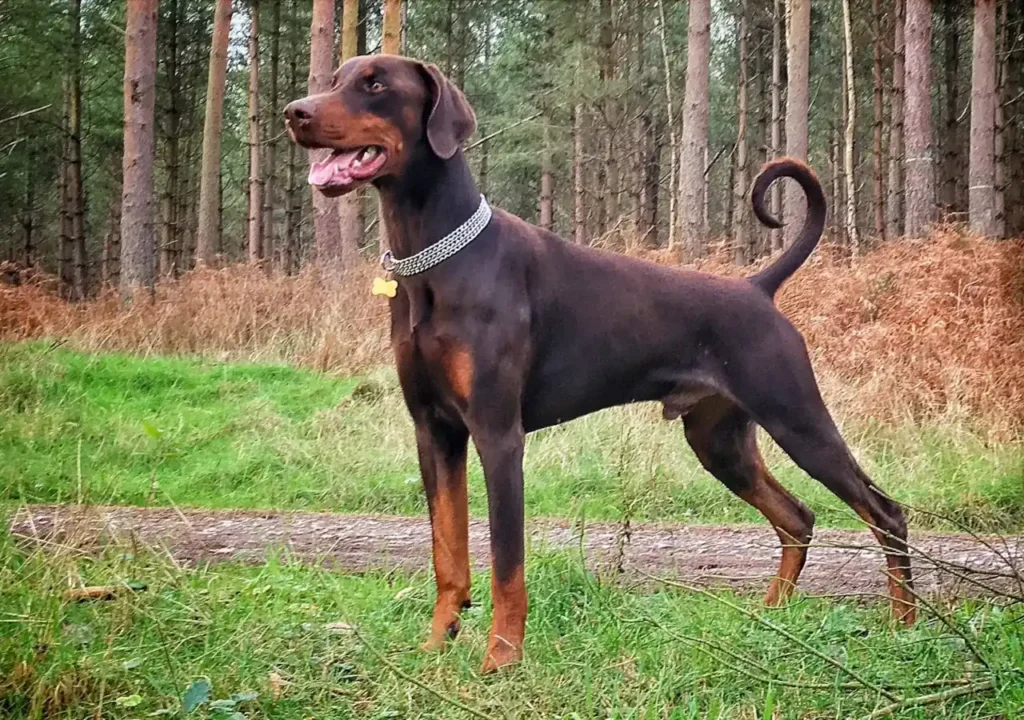
Country of origin: Germany
Height: 68 ~ 72 centimeters
Weight: 35 ~ 40 kilograms
Average life span: 10 ~ 13 years old
1. Appearance
It has a sturdy body, narrow and prominent head, erect ears and long body.
Their coat color is usually “black”, but can also be “red”, “blue” or “dark red”.
Most Dobermans have a distinctive “reddish-brown chest marking.
2. Personality
Energetic, “confident” and “courageous”.
Aloof but “alert”, it is a good choice as a guard dog or working dog.
3. Lifestyle
In addition to moderate exercise, some “professional training” and “enough care” are needed to make them competent working dogs and not uncontrollable and threatening to the general public.
4. Problems
Heart problems: such as dilated cardiomyopathy. When owners find that their dogs are easily tired, losing weight, shortness of breath, etc., they are advised to go to the nearest animal hospital for examination immediately.
Skeletal problems: e.g. “Hip dysplasia” is a common congenital genetic disease in all kinds of dogs.
21. Great Dane
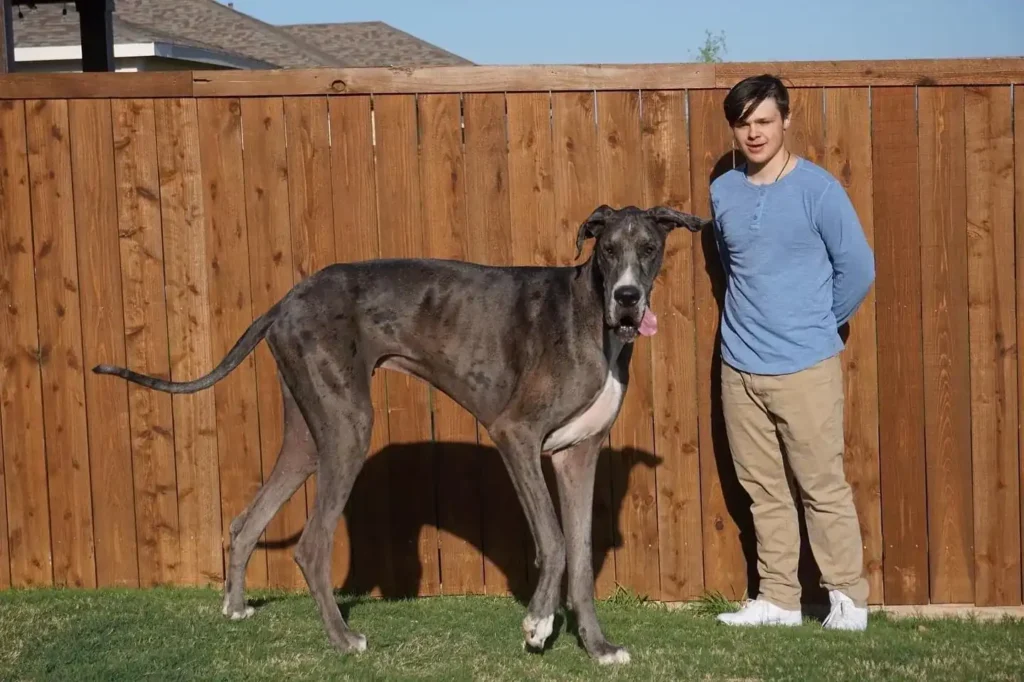
Country of origin: Germany
Height: 71 ~ 90 centimeters
Weight: 50 ~ 82 kilograms
Average life span: 8 ~ 10 years old
1. Appearance
Large square head with erect ears. Tall, strong body structure and solemn appearance.
Coat colors include “spotted”, “black and white”, “blue”, “tiger spotted”, “flowery”, etc.
2. Personality
Friendly, gentle and loyal.
They are usually very close to their family members, especially with children, and are known as “gentlemen among giants”.
However, they can be wary, reserved and even aggressive towards strangers.
After training, they can also play the role of a guard dog.
3. Life Needs
Due to its large size, the Great Dane requires “adequate exercise and training”, but not so strenuous as to injure its knees.
Socialization and obedience training are very important for the Great Dane to ensure that it is friendly and quiet and does not pose a threat to other people or small animals.
4. Problems
Heart problems such as dilated cardiomyopathy. When owners find that their dogs are easily tired, losing weight, short of breath, etc., they are advised to go to the nearest animal hospital for examination immediately.
Skeletal problems: e.g. “Hip dysplasia” is a common congenital genetic disease in all kinds of dogs.
Summary
After reading the above introductions to various dogs, I believe you can find a suitable partner according to your own preferences and conditions. The most important thing is that once you make up your mind to keep it, don’t abandon it, please be responsible for it. Because it is not just a pet, but our family, and a good partner who supports each other on the journey of life.
